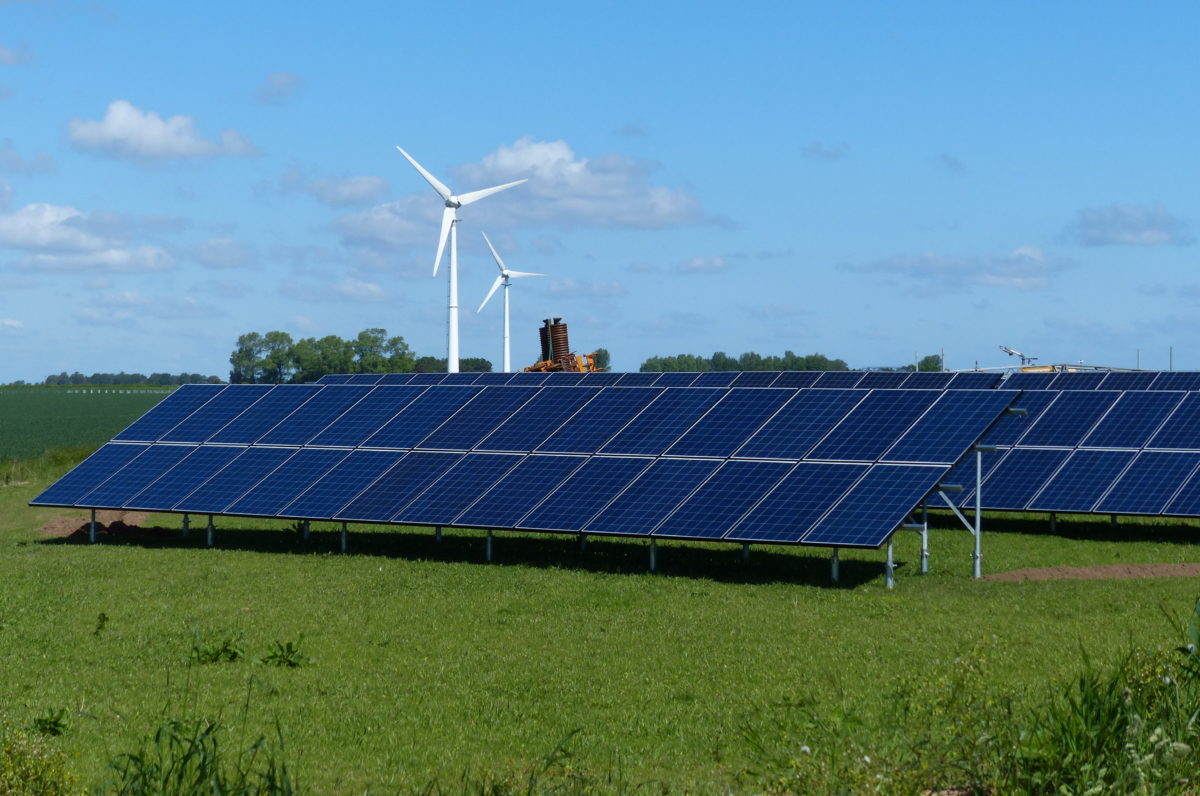Four states with a combined population of 29 million could enact new renewables laws next year, or more aggressive versions of existing laws, thanks to voters in those states.
Minnesota Governor Tim Walz has previously targeted 100% clean electricity by 2040, and will soon work with a state legislature with a majority of Democrats in both legislative bodies.
Similarly, Michigan Governor Gretchen Whitmer has called for economy-wide carbon neutrality by 2050, and will soon be backed by a majority of Democrats in both legislative bodies.
In each state, the League of Conservation Voters (LCV) expects the new “pro-environmental” legislative majorities to “hit the ground running” with a major climate bill.
In Maryland, Governor-Elect Wes Moore campaigned on a goal to reach 100% clean electricity by 2035, and will lead the state alongside a Democrat-controlled legislature that last year enacted a goal of net-zero greenhouse gas emissions by 2045.
In Massachusetts, Governor-Elect Maura Healy pledged in her campaign to seek 100% clean electricity by 2030. The state’s legislature last year enacted a law targeting net-zero greenhouse gas emissions by 2050, and will retain its Democratic majority.
In each of those two states, a renewables law more aggressive than the current version could result.
In Arizona, where votes were still being counted, Democratic gubernatorial candidate Katie Hobbs has proposed a water and energy innovation initiative in which stakeholders would work together toward carbon-free energy by 2050. If she wins her election, she may have the opportunity to work with a Democratic-controlled legislature to launch that initiative.
Calling the U.S. elections a “green wave,” Pete Maysmith, senior vice president of campaigns for LCV, saw a similarity to 2018, “when we saw new governors come into office ready to pass major clean energy and environmental legislation.” Four of those five governors have won re-election, he said, while in Nevada the vote count is ongoing.
New goals
Massachusetts Governor-elect Maura Healy proposes to reach 100% clean electricity by 2030 in part by reaching “a total of 10 GW of deployed solar by 2030,” with a focus on bringing rooftop solar to underserved communities, and encouraging “smart siting” of large solar projects.
Healy also plans to “press utilities to plan for and upgrade the distribution system to integrate new solar, without the delays customers face today due to utility backlogs.”
To position Massachusetts as “the nation’s offshore wind capital,” Healy plans to expeditiously permit the 5.6 GW of offshore wind procurements currently authorized by law, and “more than double” the state’s current target to reach 10 GW of offshore wind by 2035.
Healy also plans to quadruple the state’s energy storage deployment, install one million heat pumps, incentivize one million electric vehicles, and electrify school buses and Boston’s public transit buses, all by 2030.
Maryland Governor-Elect Wes Moore’s proposal for 100% clean electricity by 2035 would reduce energy consumption, “supercharge” investments in wind and solar projects, and invest in research and development of battery storage, to bring new technologies to market quickly.
Moore also plans to target net-zero emissions by 2045, through clean energy generation targets, incentives for electric vehicles and public transit, support for more sustainable agriculture and forestry practices, and reduced consumption.
Encouraging words
Offering suggestions for two of the states, Solar United Neighbors Communications Director Ben Delman said that Maryland could make the state’s community solar program permanent, while Minnesota could protect homeowners who want to go solar, yet face restrictions set by homeowner associations.
With changes in the Michigan and Minnesota legislatures, Clean Energy States Alliance Executive Director Warren Leon said the two states are “good candidates” to convert their respective governors’ goals into law.
Vote Solar sees opportunities across the four states, said Chief Program Officer Sean Garren, and is “eager to take full advantage” of those opportunities.
This content is protected by copyright and may not be reused. If you want to cooperate with us and would like to reuse some of our content, please contact: editors@pv-magazine.com.








By submitting this form you agree to pv magazine using your data for the purposes of publishing your comment.
Your personal data will only be disclosed or otherwise transmitted to third parties for the purposes of spam filtering or if this is necessary for technical maintenance of the website. Any other transfer to third parties will not take place unless this is justified on the basis of applicable data protection regulations or if pv magazine is legally obliged to do so.
You may revoke this consent at any time with effect for the future, in which case your personal data will be deleted immediately. Otherwise, your data will be deleted if pv magazine has processed your request or the purpose of data storage is fulfilled.
Further information on data privacy can be found in our Data Protection Policy.